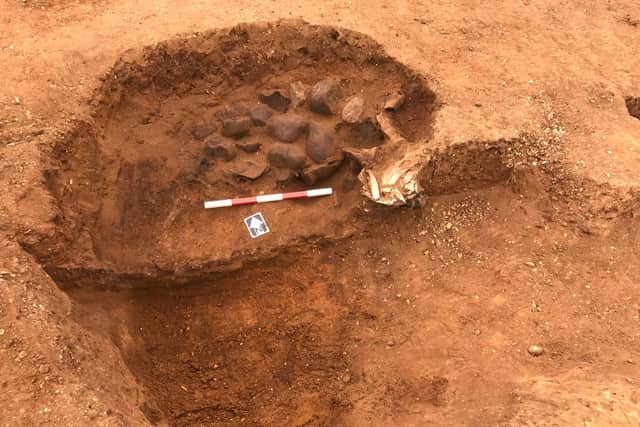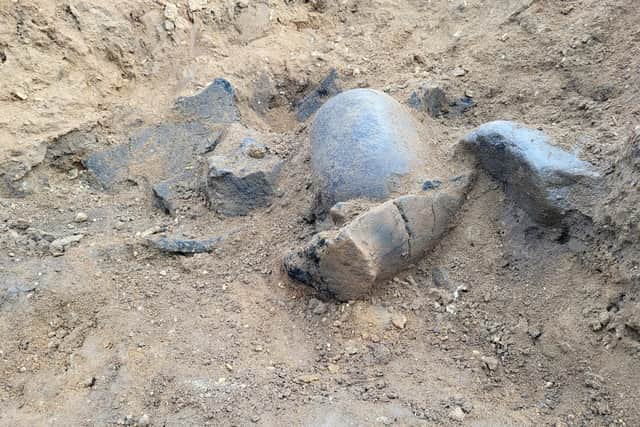Iron Age feast uncovered during A428 excavations near Bedford
and live on Freeview channel 276
A mid-late Iron Age (300 BC – 43 AD) farmstead has been uncovered in the latest excavations on the A428.
Archaeologists from MOLA (Museum of London Archaeology) found a pit full of animal bones and pottery vessels, as well as burnt stones – evidence of a large fire around where communities would have gathered and feasted.
Advertisement
Hide AdAdvertisement
Hide AdThe work is being carried out on the proposed route of the A428 Black Cat to Caxton Gibbet improvement scheme.


And this discovery suggests the site may have been a significant meeting place for people.
In southern Britain during the Iron Age, communities did not always live together in large settlements, so feasts marking special events were really important. These central meeting sites would also be an opportunity to exchange gifts, trade, and sometimes carry out ritual activities.
In Iron Age Britain people generally ate meats such as beef, mutton and pork. However, a full analysis of the animal bones, pottery, and possible burnt grains will now be made by specialists.
Advertisement
Hide AdAdvertisement
Hide Ad

This will help archaeologists answer more specific questions about the feast. Towards the end of the Iron Age new ingredients such as olives and coriander were being imported into Britain – so this discovery has the potential to highlight the changing diet of ancient peoples.
The pottery vessels could also identify trading or gift exchanges from across the channel.
Archaeologists from MOLA are continuing to uncover incredible archaeology across the route. A further 30 different areas are currently under investigation, collectively measuring over 625,700 sq m – the size of 89 football pitches – and spanning more than 10 miles.
Lorraine Bennetts, senior project manager at National Highways, said: “We’re really excited by the fascinating discoveries being made by MOLA. It’s been wonderful to see how the A428 Improvements are revealing the stories of the people living in Bedfordshire and Cambridgeshire thousands of year ago, which we hope will inspire and intrigue local residents in the present day.
"The uncovering of this Iron Age feast is just the beginning, and we look forward to sharing more information as the dig progresses.”
